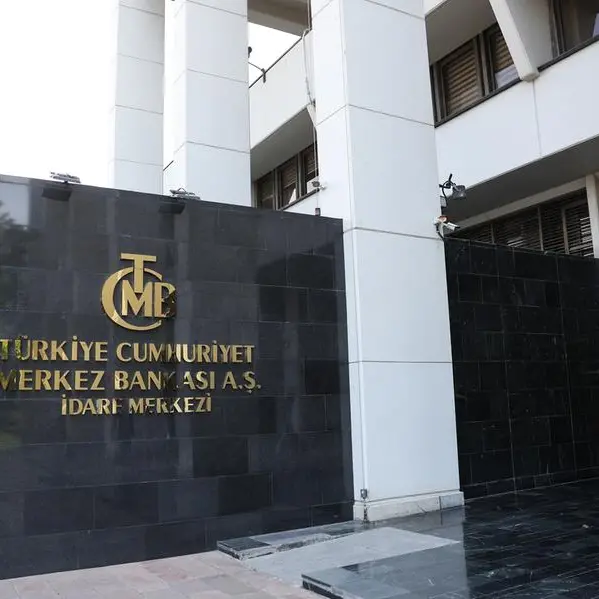PHOTO
Owners of Britain's largest malls, skyscrapers and industrial hubs face hikes in borrowing costs and a recession that could depress prices by up to a fifth, forcing lenders and investors to reassess their appetite for commercial property.
Developed economies globally are grappling with far-reaching consequences of an end to years of ultra-loose monetary policy, which kept asset prices high and the cost of debt low.
So far, nowhere has the shock of this reversal hit harder than in Britain, where clashes between policymakers on how to revive growth and halt inflation have triggered a dramatic repricing across sterling money markets.
As homeowners reel from a sudden surge in mortgage costs, a spike in five-year UK swap rates has also sent chills across Britain's $1.6 trillion commercial property sector, where asset prices could slump by as much as 20% by end-2024, analysts at Goldman Sachs said.
Data from MSCI, which tracks monthly changes over 1,794 properties valued at around 37 billion pounds ($41.55 billion), showed values fell by 2.6% in September, the largest monthly decline since July 2016, the month after Britain voted to leave the European Union.
Commercial property investors like real estate investment trusts (REITs) rely on being able to earn more in rents and profits from sales than they shell out in expenses, including costs of debt and equity capital.
Bellwethers like Land Securities, British Land and Hammerson have pushed major refinancing beyond an expected mid-2023 peak in Bank of England's benchmark rate, earnings statements show.
But good financial housekeeping is just one challenge, as labour, fuel and commodities expenses also raise risks of cash-strapped tenants handing back their keys.
Although less exposed to risky property loans than before the 2007-2008 global financial crisis, banks are already on alert for breaches in loan terms linked to an asset's market value or the rental income relative to the debt secured on it, sources said.
If these terms, or covenants, are breached, investors may need to refinance earlier than planned, at higher rates. Goldman Sachs analysts predict gross finance costs for the listed UK real estate firms it covers may rise by 75% over the next five years.
James Liddiment, managing director in Real Estate Advisory Group at Kroll, said commercial property prices were already hit by higher borrowing rates, which were a fundamental cost for occupiers and investors alike.
"Given the likely number of those impacted, and the level at which rates are projected to rise, lenders may be forced to agree covenant waivers in an attempt to stabilise loan books," he told Reuters.
UK REITs are using less leverage now than before the financial crisis. But as property values dip, average loan-to-value ratios have crept up to 28% from 23% at the start of the year, according to Zachary Gauge, head of real estate research at UBS.
OCCUPATIONAL HAZARD
Worries about financing costs follow years of concern over rents for some REITs, as the pandemic emptied offices, shops, pubs and restaurants, reducing businesses' demand for space.
UK office occupancy rates were around 30% in recent weeks compared with an estimated pre-pandemic average of 80%, according to Remit Consulting.
Leisure and retail property vacancy rates also remain above pre-pandemic levels, Local Data Company figures show, at 10.6% and 15.4% respectively. Footfall at UK retail destinations is down around 15% on average in 2022 compared to 2019, according to Springboard data.
Central London office space demand, particularly in older buildings, is also weakening.
Just 2.6 million square feet (241,548 square metres) of space was let in the third quarter, 30% down from the second quarter and 14% below the 10-year quarterly average, CBRE said.
Some occupiers are scaling back to curb costs and energy consumption, which is likely to further compress property firms' rental incomes further.
HSBC told staff this month it was cutting its office space globally by around 40% from 2019 levels.
The lender could ditch its iconic skyscraper home in London's Canary Wharf as part of a broader review and in the meantime is consolidating staff across fewer floors at the 45-floor tower, reducing the occupied space by 25%.
Marks and Spencer is accelerating plans to shut 67 larger "full line" stores over five years in a blow to its landlords and nearby businesses.
Uniform Business Rates, a tax levied on commercial property, are likely to leap by 3 billion pounds next April, the biggest annual jump since 1991, after inflation hit 10.1% in September, the month in which rates for the following year are set.
"...further business failures and shop closures will result unless the UBR is frozen again," Jerry Schurder, Business Rates Policy Lead at Gerald Eve, said.
The stock market also signals growing investor caution around UK commercial property, with an index of 15 UK REITs down 44% so far in 2022 compared with a 9.8% fall in the wider FTSE 350 .
Some international investors are also reporting British developers' concerns about their ability to finance construction.
"The developer is saying: we would want to sell it now, or we are more open to selling it now, and so much so that we are willing to give away a proportion of (...) the developer profit in order to keep us moving forward," Martin Zdravkov, lead portfolio manager at German asset manager DWS, said. ($1 = 0.8906 pounds)
(Editing by Tomasz Janowski)























